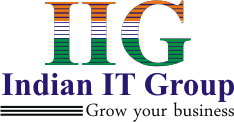The sales profession moves faster than ever today. In the blink of an eye, new competitors emerge, products similar to yours are released, and before you know it, it’s a race to the bottom.
No matter what industry you’re in, what worked well a few years ago isn’t good enough today. This is no time for trial and error or order taking; this is a time to sell. Here are some basic steps you can take to improve your sales performance, reduce your cost of selling, and ensure your survival.
1. Clarify your mission.
Begin by understanding your business niche. What do you do best? Who needs what you do? How do you best approach these prospects? How much are they willing to pay? If these questions are not answered easily, campaign at the top for clarity and vision.
2. Break the mission into specific goals.
Write down the activity goals (calls per day, proposals per month, referrals per call, etc.) that you can control. Set results goals (sales per month, amount per sale, profit per sale, etc.) to measure your progress, and track them closely. Increase your activity and measure the results. Goals focus your attention and energize your action.
3. Sell to customer needs.
Always assume your prospects will buy only what they need. How can you convince them of that need? Emphasize the features of your product or service that reduce costs and solve problems for the customer. Sometimes you can reposition your wares. For example, you sold wool uniforms for their look and feel; now stress wool’s durability and lasting value. Be creative in your sales and marketing.
4. Create and maintain favorable attention.
Effective marketing, referrals, strong sales skills, and strategic questions are the keys to creating favorable attention. Diligent follow-through and above-and-beyond customer service are the keys to maintaining it.
5. Sell on purpose.
Know both what to do and why you’re doing it at every step along the way. Who are you targeting and why? What are you going to tell them and why? What are you going to ask them and why? What is your proposal going to look like and why? When are you going to ask for the order? If you don’t feel sure of yourself at every step of the selling process, get some training or guidance.
6. Ask, listen, and act.
Better than any others, these three words summarize success in sales. Your questions must be creative, planned, relevant, and direct. Your listening skills must be highly developed. You must respond and take action that proves that you listened to the customer and want the sale.
7. Take the responsibility but not the credit.
Realize that you are the team leader. The company looks to you for direction and supports your effort. To build a strong support team willing to go the extra mile when you need it, give your team the credit for everything that goes right, and take the blame when it goes wrong.
8. Work on the basics.
Even the best of the best have room for improvement. Make a decision to improve your weaknesses, and set goals to force yourself to do the things you don’t like to do. Be more creative in your prospecting, fact finding, and presentation skills. Imagine the perfect salesperson and compare yourself to the ideal.
9. Develop your attitude.
Your attitude is controllable. Conquer your fears. Change the beliefs that limit your success. Your thought habits control your commitment, enthusiasm, persistence, resilience, happiness, and confidence. Be aware of them, decide which ones are unproductive, and then make a commitment to change. With time and effort, you can become the person you want to be.
10. Maximize your time.
Focus on your goals. Test every activity for its importance and urgency. Create an ideal schedule, and test your actual time use against it daily. Remember, just one hour a day used more productively adds up to more than six extra weeks of productive time a year.


